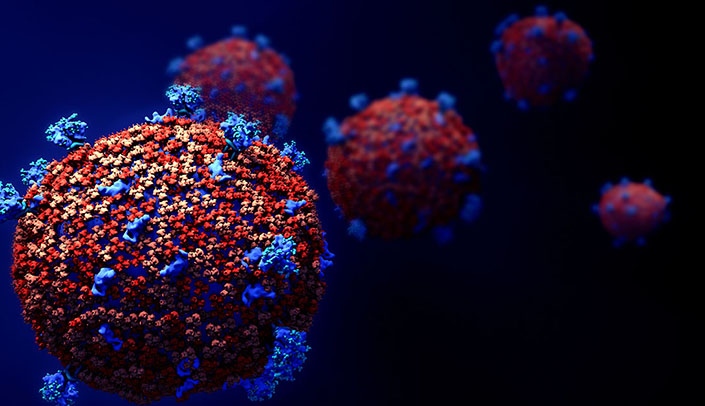As government officials, business leaders and others consider their options for safely taking steps to recover from the COVID-19 pandemic in the state of Nebraska and beyond, the University of Nebraska Medical Center has developed an innovative data-driven model that will help to guide their decision-making.
The Pandemic Recovery Acceleration Model (PRAM) is designed to assist public and private sector leadership in assessing the regional and statewide impact of the COVID-19 pandemic and making informed decisions about social distancing and other key pandemic response measures. The model provides daily assessments of the regional specific impact of COVID-19 and availability of medical resources across Nebraska, helping officials make real-time decisions about appropriate resources and recovery steps for their communities.
“We’re all eager to return to a more familiar routine of living and working, but building our ‘new normal’ will require a thoughtful, localized, data-driven approach that puts the health and safety of individuals first,” said Jeffrey P. Gold, M.D., chancellor at UNMC. “I believe this new model will help our state leaders develop just such a plan. It also could very well serve as a model for other states. The PRAM will serve as a daily temperature check across the state, helping us to decide, in real time, what public health measures we should keep or remove, and whether and how certain businesses or educational institutions could stage their recovery steps.”
This graphic way to illustrate current COVID-19 community impact was developed collaboratively by Dr. Gold and Chris Wichman, Ph.D., of the UNMC Department of Biostatistics and Ali S. Khan, M.D., M.P.H., dean of the UNMC College of Public Health. They worked closely with leaders of the UNMC Global Center for Health Security (GCHS), including Ken Bayles, Ph.D., Chris Kratochvil, M.D., James Lawler, M.D., M.P.H., John Martin Lowe, Ph.D. and Shelly Schwedhelm, M.S.N., R.N.
This model allows health officials, public officials and university leaders to capture a real time snapshot of how COVID-19 is affecting the community, a region or the state by using six parameters describing the pandemic impact. The PRAM then graphically illustrates the current pandemic status and in an innovative way, also provides analysis of the rate of acceleration or deceleration of change for the key parameters over a fourteen-day interval, provided at given point in time.
“The PRAM is not a predictive model”, Dr. Gold said. “It’s a statement of where we are and the acceleration of change at any time,” he said. “It allows for accurate and timely data sharing and critically important health care decision making based on evolving best practices.”
Because available health resources also are being tracked, health officials can see if resources such as the number of critical care beds or ventilators are being used faster or more slowly than the spread of the disease. In this way, resource needs can be anticipated and planned.
“That will be important in helping the University of Nebraska and possibly other sectors of the state reopen university campuses and programs in different areas at different times based on the data analytics,” Dr. Gold said.
